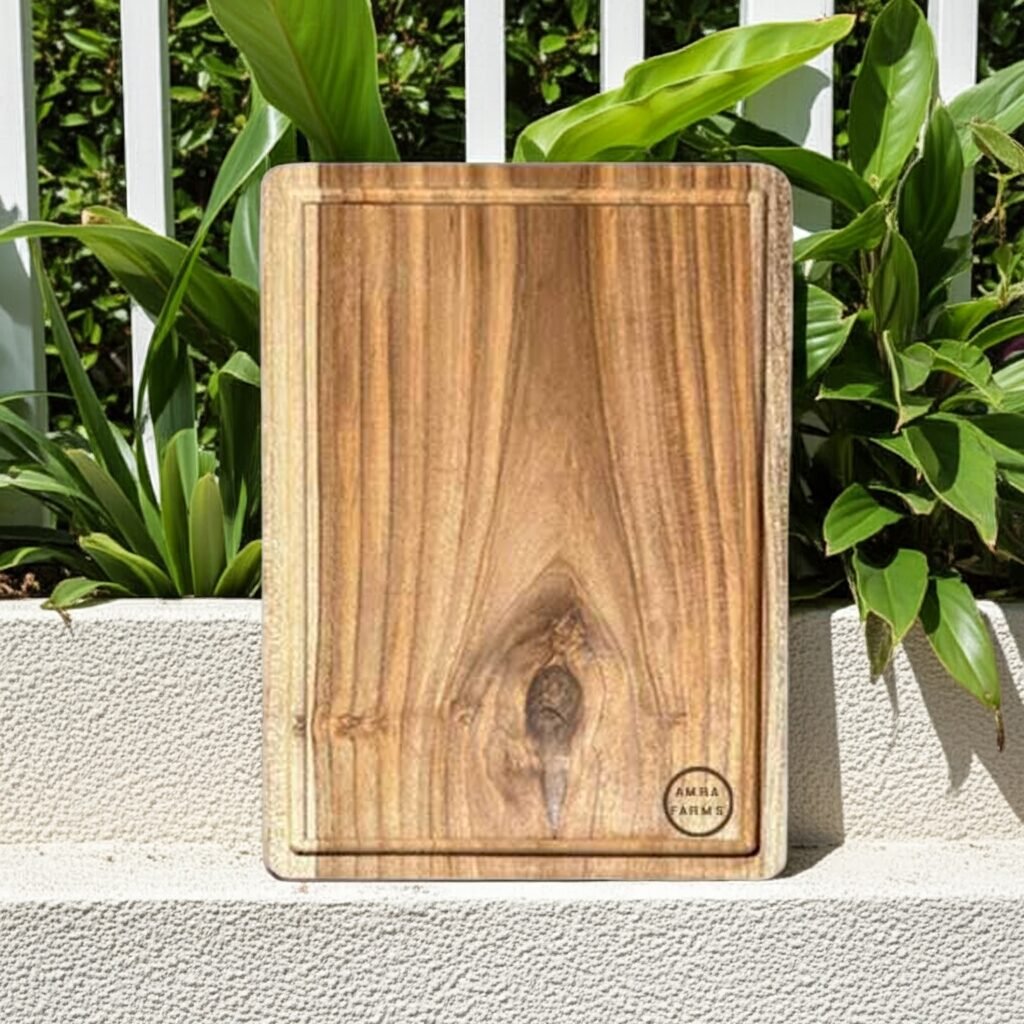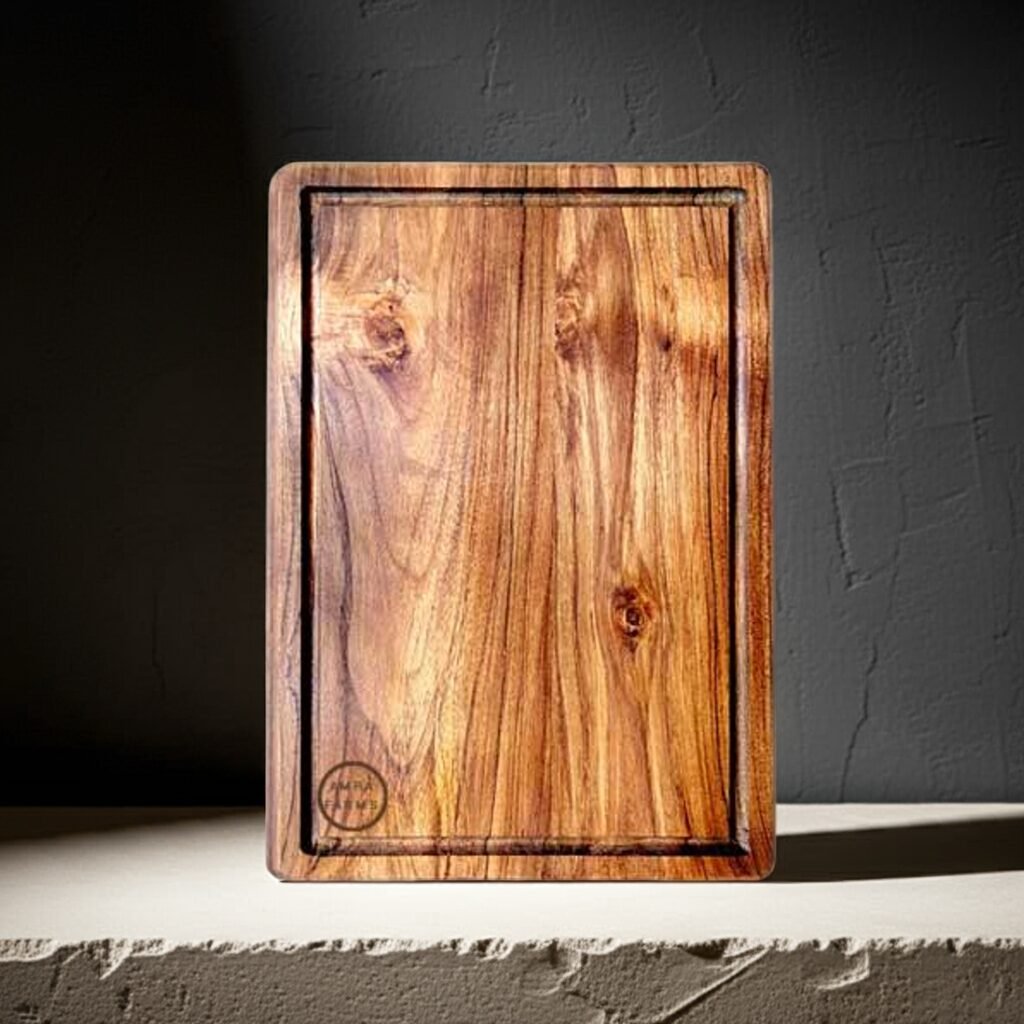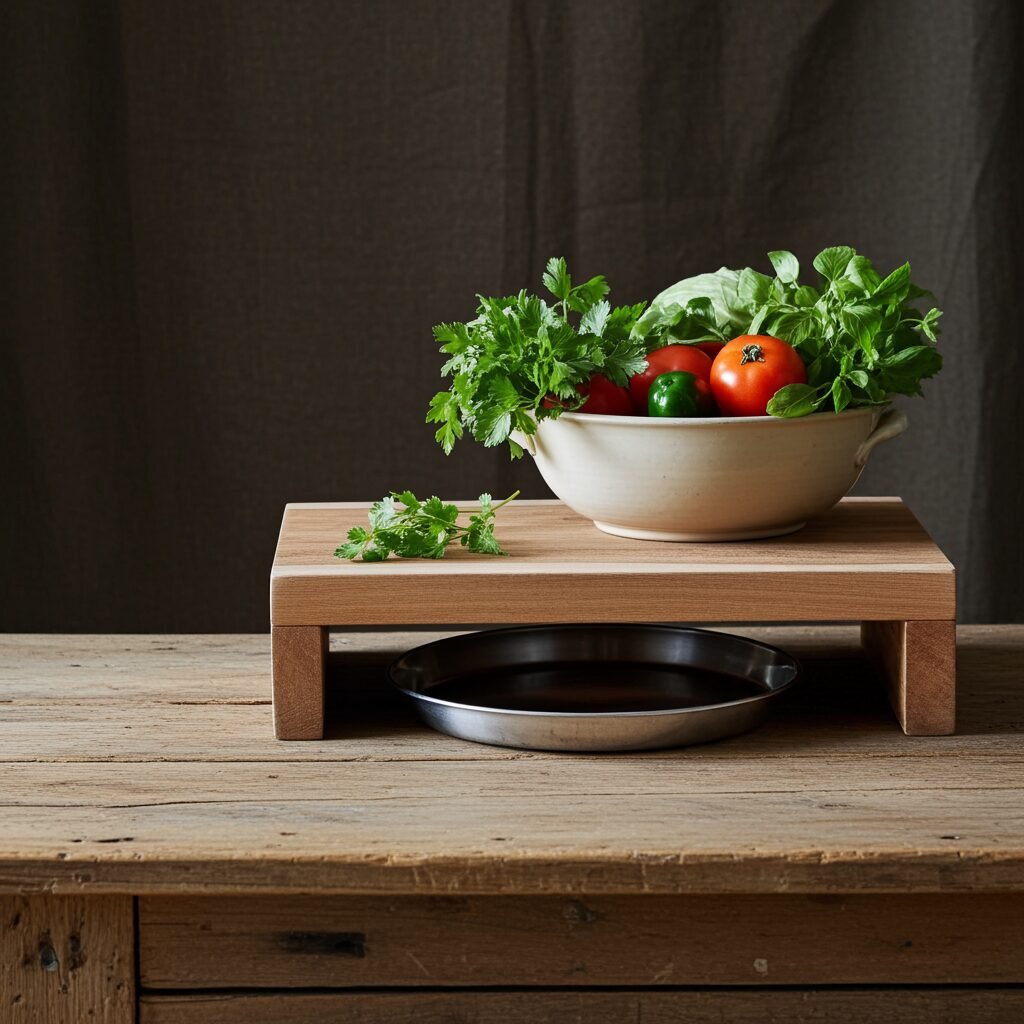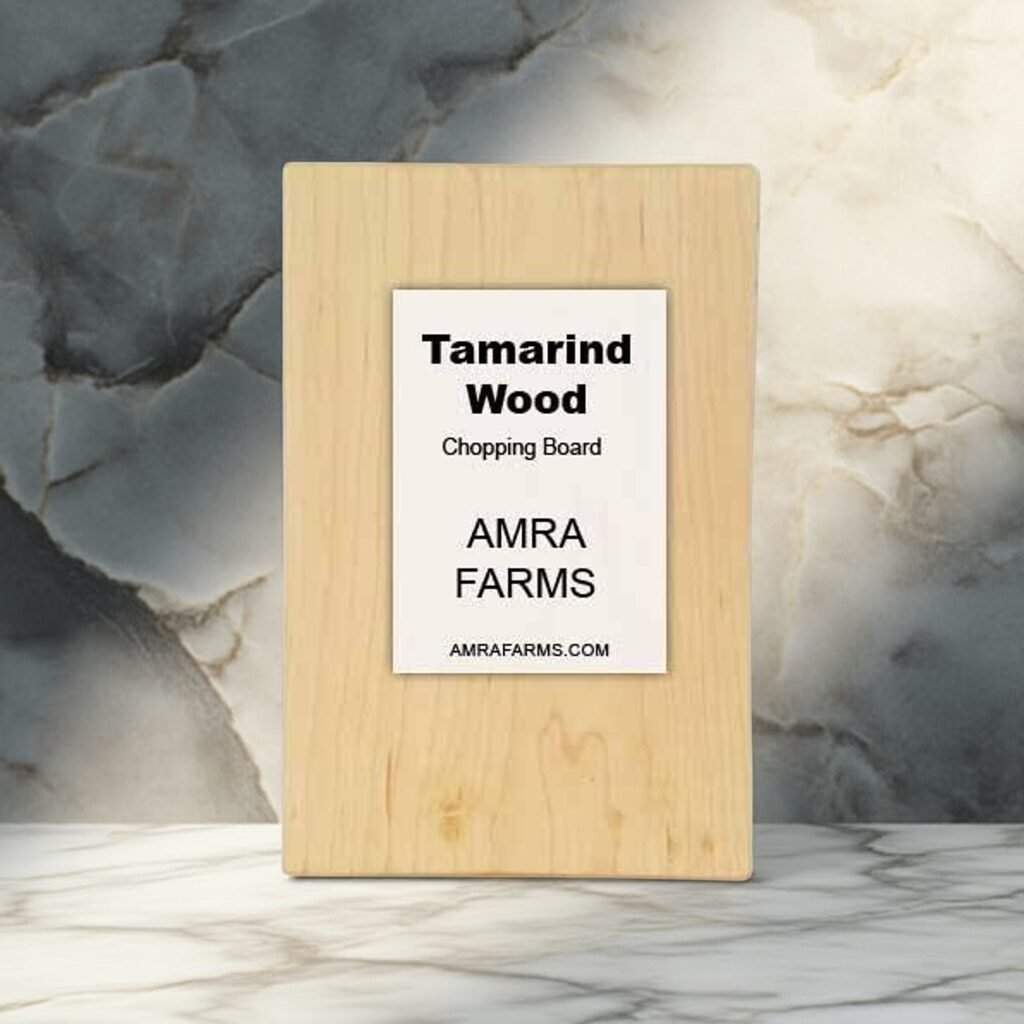Your cart is currently empty!
7 Easy tips to maintain your wooden cutting board to make it last longer
7 Easy tips to maintain your wooden cutting board to make it last longerA wooden cutting board is a timeless kitchen tool known for its durability, natural beauty and knife friendliness. A hardwood chopping board made from Teak, Tamarind, mango wood or neem will last decades if cared for well and if you ensure that it stays hygienic. Below are 7 basic easy maintenance tips to protect your cutting board to ensure that they look brand new for years.
1. Handwash only. Dishwashers are strictly prohibited
Cleaning wooden cutting boards safely requires that you avoid dishwashers. Dishwashers expose your cutting boards to high heat and harsh detergents. This will warp your boards, split or dry out the fibres. Instead, use a mild dish soap and warm water to wash your board. Use a soft sponge or a plastic brush to remove particles. Do not use a steel scrub. Prolonged exposure to water can cause swelling and weaken the fibres. If you are washing an end grain chopping board, the chances of the glues in the joint will loosen deteriorating your board’s quality and lifespan.
2. Dry your board thoroughly to prevent cracks
Most Indian households do not have the practice of drying their utensils after washing them. They place them directly on a rack or basket for it to dry naturally. While this is a normal practice and time saving, the practice allows more time for tools like a chopping board to absorb moisture on the surface. The water on the surface will eventually seep into the wood as wood is porous and the time it takes to dry the board is much higher. With more moisture comes the problem of mould and mildew. Also the water absorbed will bloat the wood a bit and loosen the fibres. With constant exposure to water in excess, the board will eventually warp. To prevent warping of wooden chopping boards, dry your chopping board immediately after you wash it with a soft towel. This ensures that the water on the surface is effectively removed, leaving little chance for the moisture to be absorbed. Air dry your board vertically after you wipe the board off. This avoids trapped moisture too.
3. Oil your cutting board regularly
Wooden cutting boards tend to go dry fast. Seasoning your cutting board regularly ensures wood hydration. When possible purchase cutting board maintenance products like mineral oil and beeswax to ensure that your boards stay in pristine condition for long. Preventing wood from drying ensures your board does not crack. Oiling and seasoning your cutting boards also makes it resistant to moisture and stains. Retaining the oil content in your board is important for the antibacterial properties of the wood to be effective. Teak wood chopping boards and tamarind wood chopping boards are naturally antibacterial due to their rich oil content. When the oil content is lost, it not only loses the lustre of the board but also affects your hygiene. Make it a practice to oil your board at least once a month. We recommend that you oil the board once a week or whenever you feel the board is dry.
4. Disinfect naturally to eliminate bacteria
When your board is not used for a while or when they are not cleaned regularly, they tend to accumulate dust, mould and mildew. This creates health concerns. A board which has been too wet for too long will also create fungi and is prone to bacterial problems. When the problem gets worse, many users tend to throw their board away or use harsh chemicals to sanitize their boards. Sanitize your cutting boards regularly to remove odours from your chopping boards. This ensures your boards will be free from bacterial infestations. Antibacterial cutting board care does not require harsh chemicals. Sprinkle coarse sea salt and scrub with half a lemon after using raw meat or seafood. Alternatively you can also spray white vinegar solution and wipe clean. This ensures that your board is sanitized with natural alternatives instead of using harsh chemicals.
5. Avoid harsh chemicals and bleach
Practice a toxic free kitchen cleaning method to preserve wooden board longevity. Check for food safe cleaning tips. Avoid bleach and strong detergents that strip away protective oils that damage wood fibres in your cutting board. Over time this leads to splitting and rough surfaces on your chopping boards that will harbour bacteria. Use of harsh chemicals is counterproductive and will ruin your boards faster. This only creates an opportunity for bacteria and moisture to remain on the board affecting food safety but also shortens the life of your board. As a practice, use mild soap. Dilute your dishwashing soap and apply well and rinse off. Do not use harsh chemicals. Never use bleach.
6. Flip and rotate for even wear. Your board is reversible
Most wooden chopping boards are reversible. Even when they are not designed to be reversible, they can be used as reversible chopping boards. Feel free to rotate the board and use one side for meat and the other for chopping vegetables. You don’t need a vegetable cutting board and another meat cutting board. One board works for both. Choose the side you want to use for meat and keep it for meat alone. This ensures food safety and prevents cross contamination. This practice evenly wears cutting boards that you use and ensures a longer life. You will also prevent grooves in wooden boards that are too deep. You will need to resurface a lot less and your board’s thickness will be maintained for longer.
7. Sand out deep cuts. Create a fresh surface every year
Your chopping boards develop deep scratches over time. This is inevitable unless you are using a steel or glass cutting board. Use a fine grit sandpaper to remove the damaged layers once a few months. You can restore your old cutting board to remove bacteria from knife cuts, and rejuvenate wooden boards by seasoning it with oil. You can do this at home or find a woodworker with a sanding tool to get the process done in a few minutes.
It’s important that you maintain your chopping board and these seven tips will ensure your boards are happier for longer.






Categories
Products
- Buy Wooden Vegetable Cutting Boards Online
- Wooden Kitchen Accessories Tools
- Buy Butcher Block & Meat Cutting Boards Online
- Buy Premium Edge Grain Single Block Wooden Chopping Boards Online
- Buy The Best Teak Wood Chopping Boards Online In India
- Buy Wooden Cutting Boards With Handle For Kitchen
- Mango Wood Chopping Boards
- Single Block Chopping Boards
- Tamarind Wood Chopping Boards
- Wooden Platter Boards , Pizza Platters & Charcuterie Boards
Tamarind Wood Cutting Board Teak Wood Cutting board
Recent Posts
- Unique Wooden Chopping Boards with Medicinal Benefits
- Exotic Woods of India and Its Uses
- Best Uses of Teak Wood: Common and Unique Applications That Make It the King of Hardwoods
- What to look for when purchasing a teak wood cutting board and how to identify teak wood
- Wooden chopping boards that naturally resist fungus/mould growth
